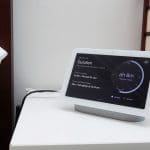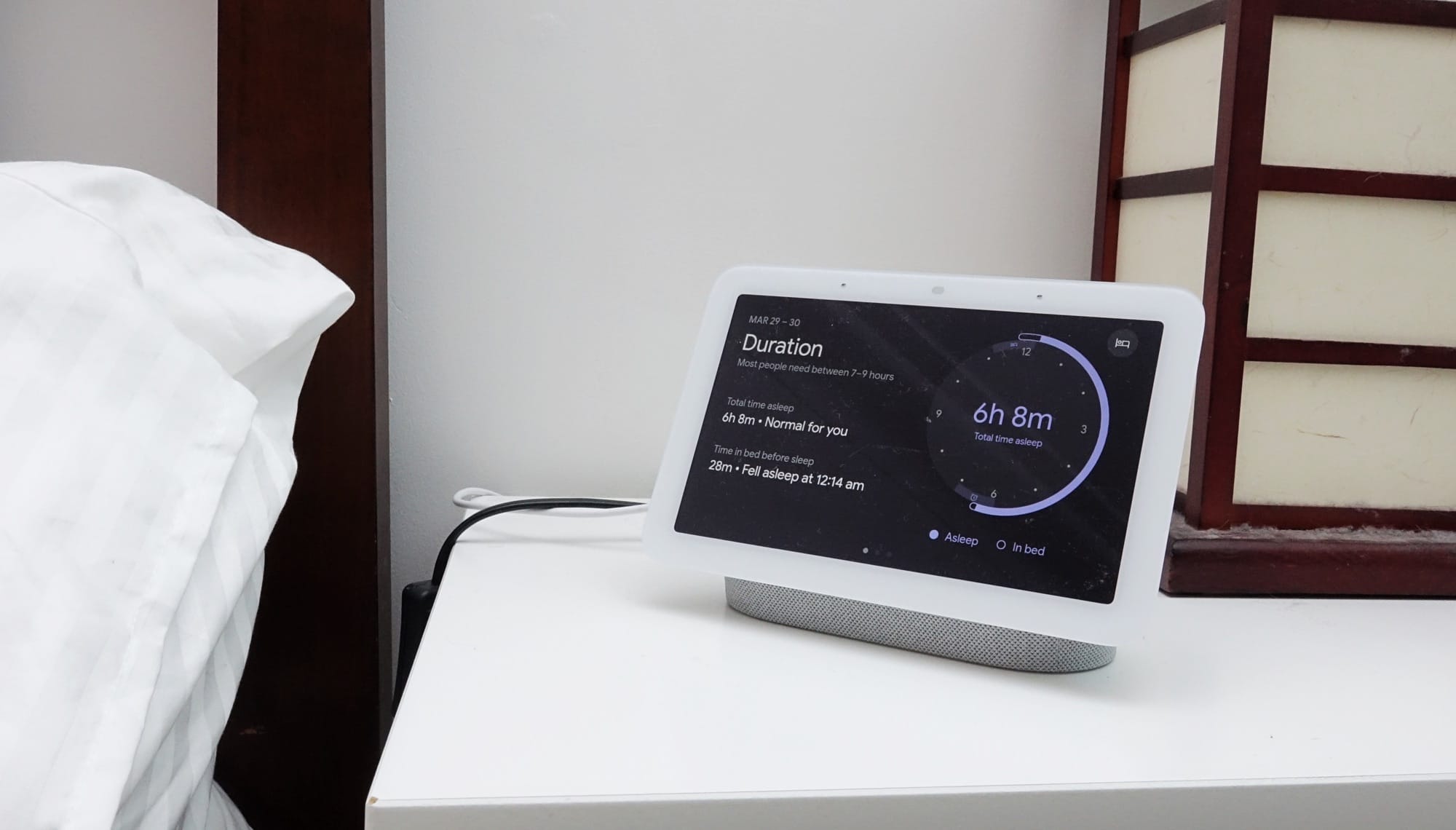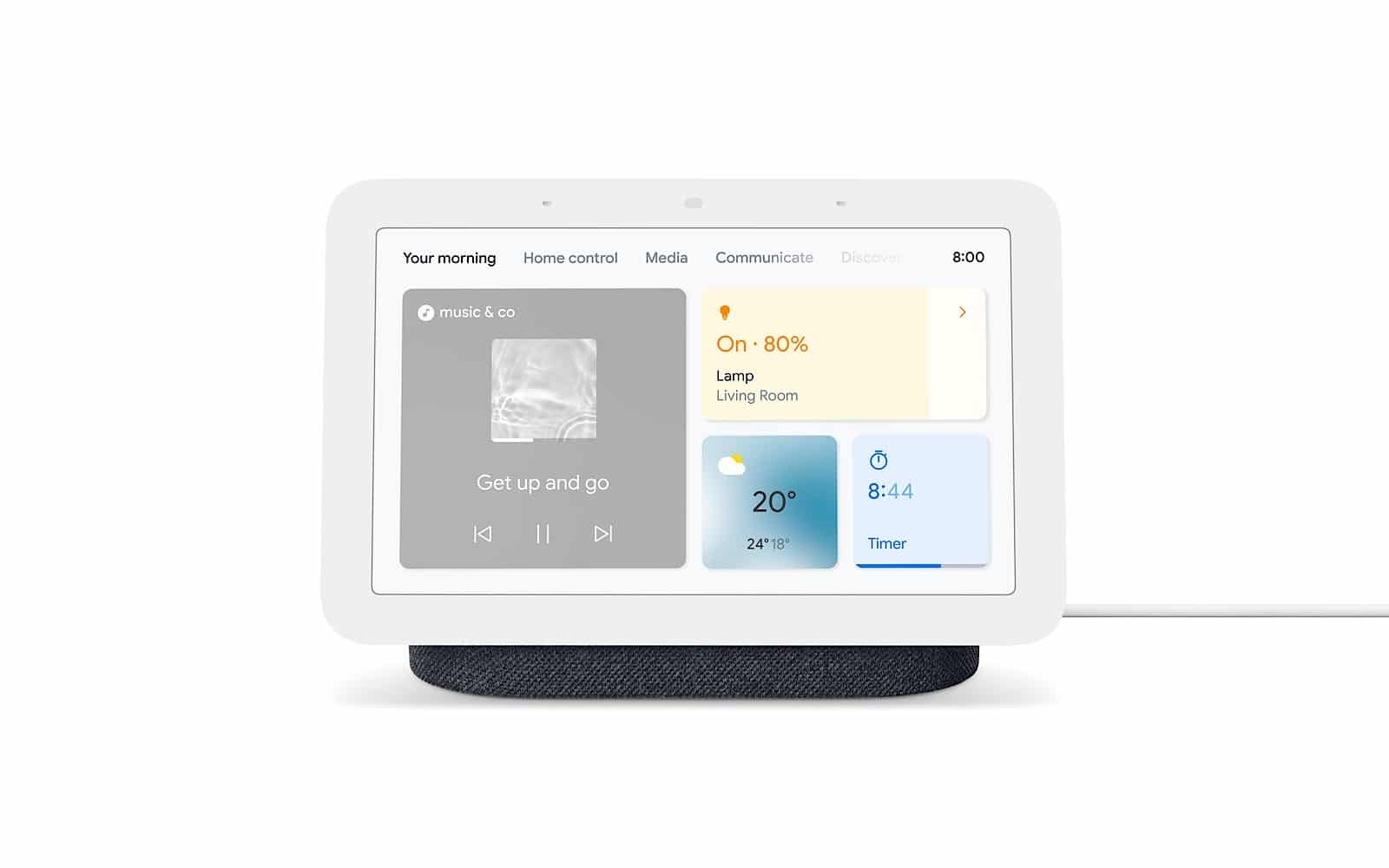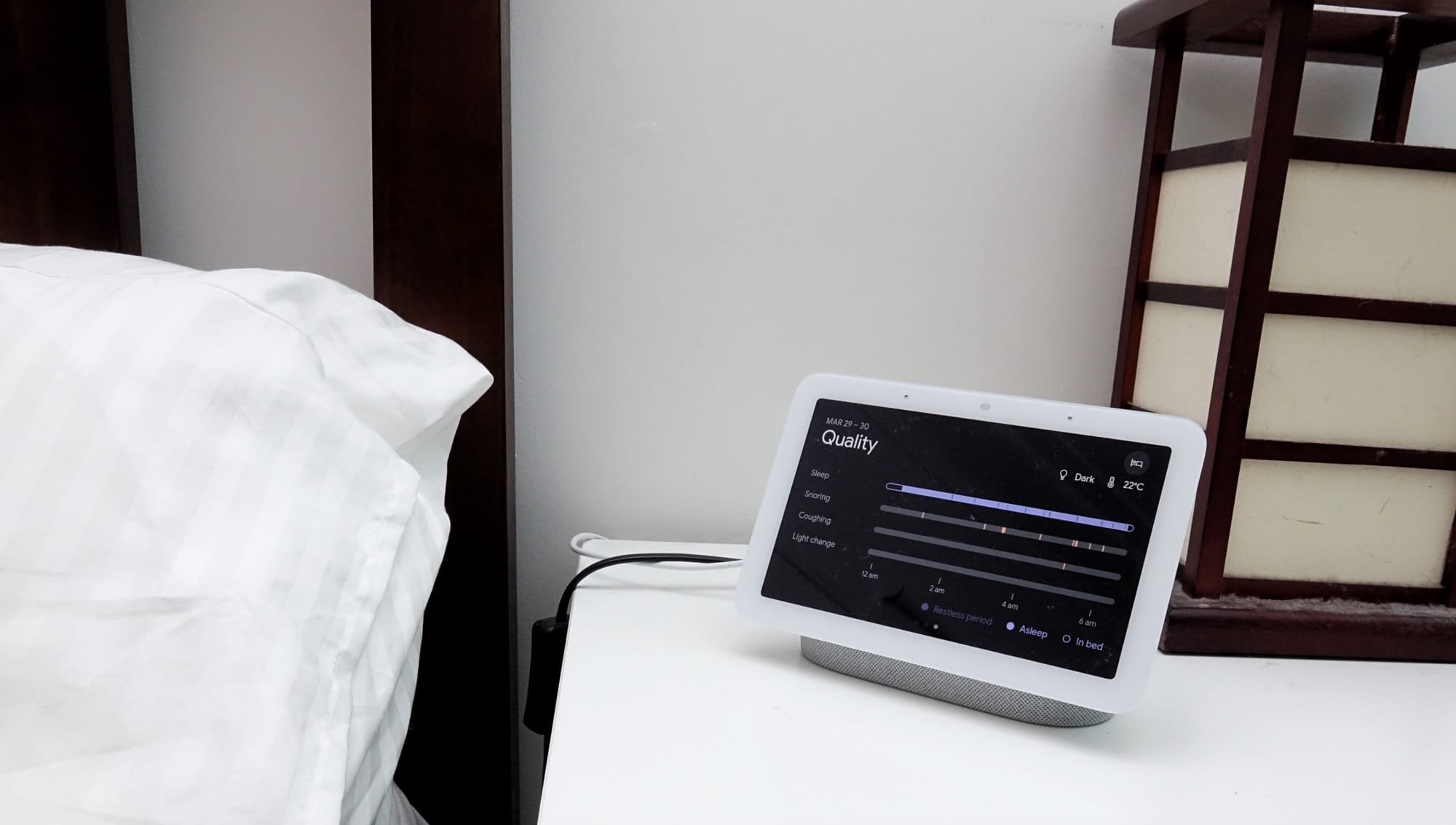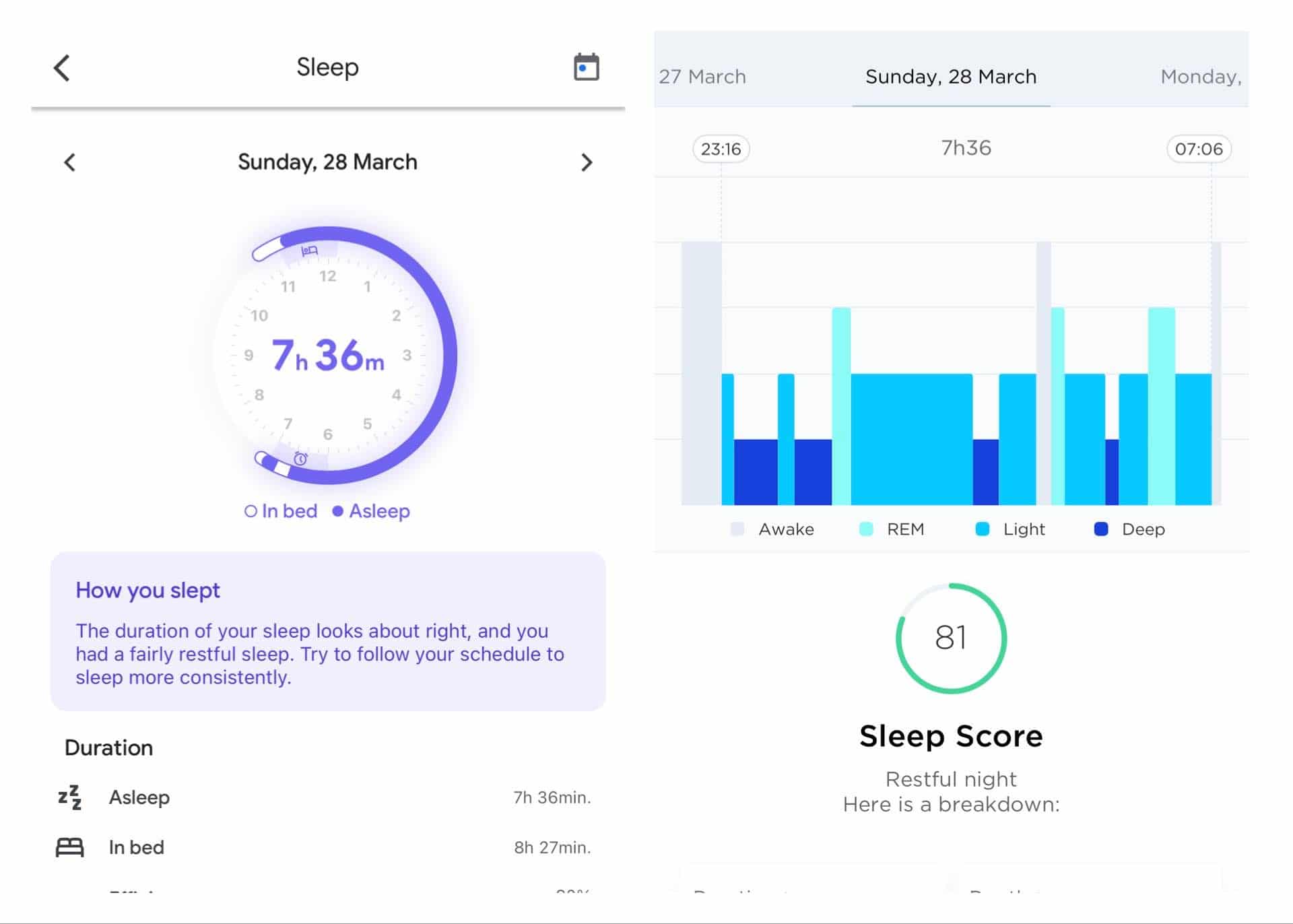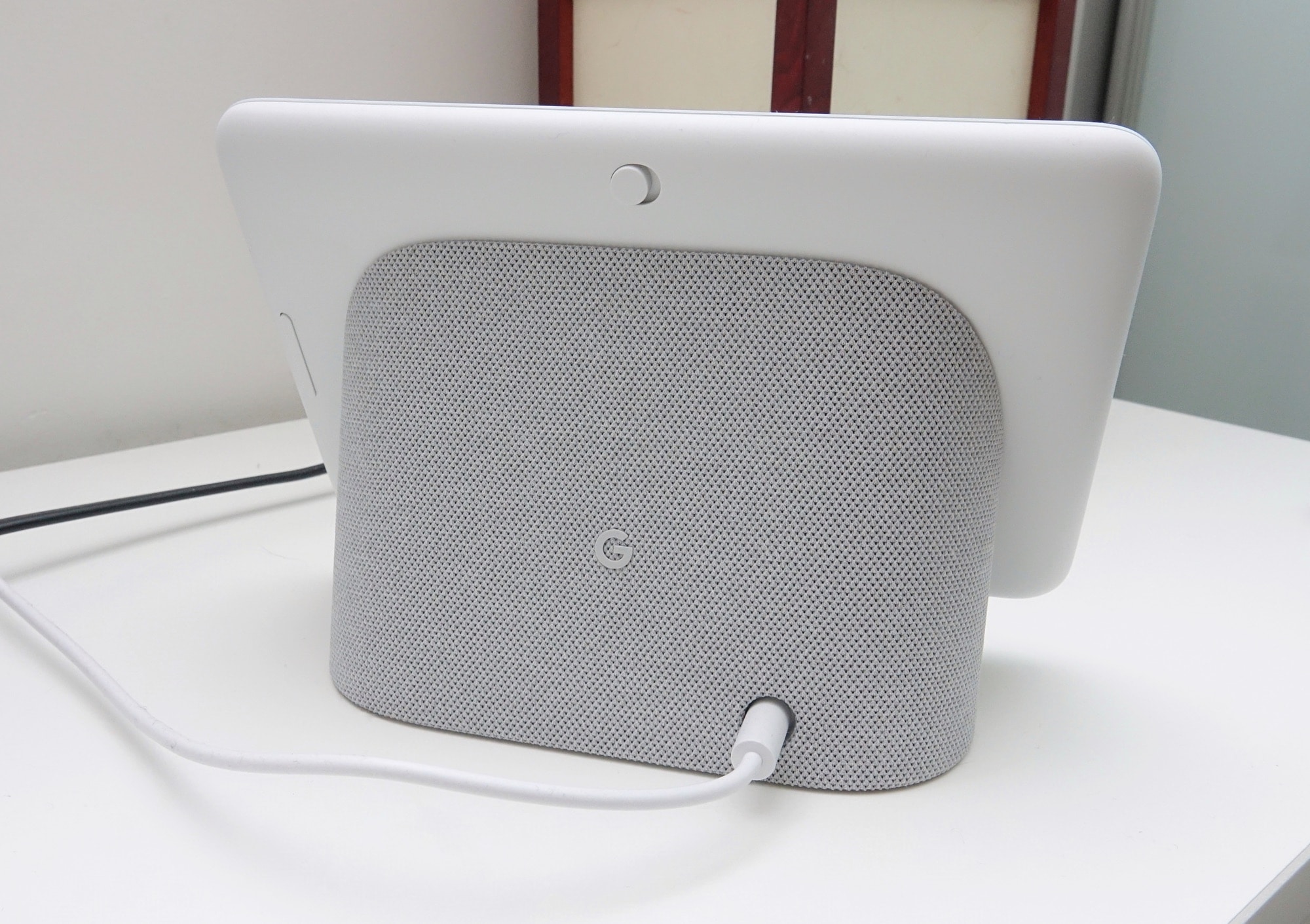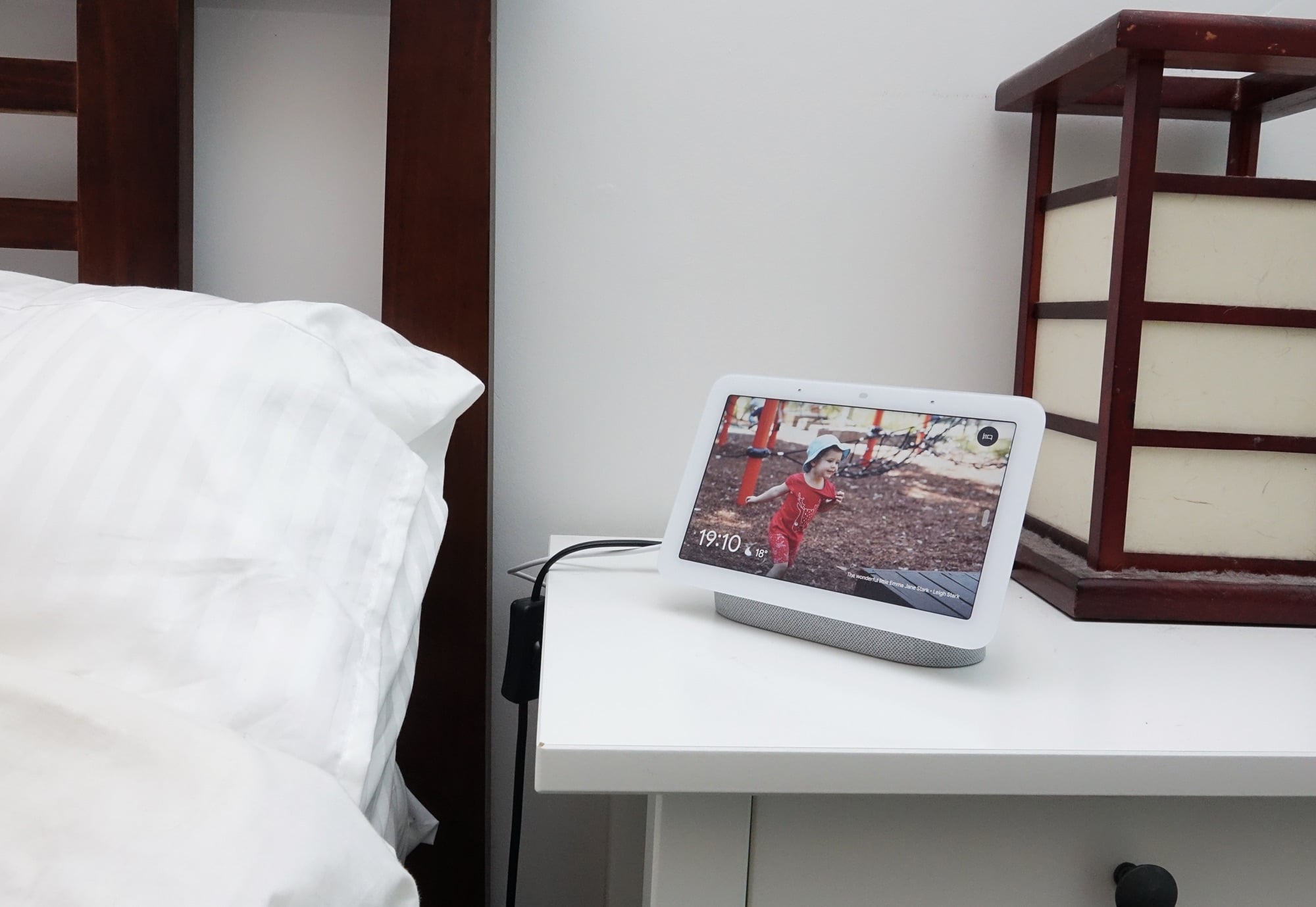Quick review
The good
The not-so-good
Google’s first smart display is getting an upgrade, as the 2021 Nest Hub — the Nest Hub 2nd gen — adds volume and sleep tracking. Is it an upgrade worth picking up?
It has been some time since smart speakers and smart screens started making a dent on our world, but not everyone has joined the club. Smart speakers are a pretty easy and often inexpensive purchase, but not everyone likes talking out in the open to a speaker without a prompt, and that’s largely where a smart display comes in.
A little bit different, a smart display is a smart speaker with a small tablet mounted to the front, often built in such a way so it comes with an operating system that doesn’t let you do something like you would with Android or iOS, but still allows you to do somethings. You can check the weather, look at photos, load recipes, read the news, and all the things an assistant might want you to do.
Most importantly, a smart display aims to always listen, because it wants to provide information at a moment’s notice, at least until you shut off the microphones, because you can do that, too.
Smart displays kind of kicked off when Amazon made them into tiny alarm clocks and Google made them into a smallish tablet, at the time called the “Home Hub”. There have been several versions from each major smart display maker, Google and Amazon, as well as a few other brands in between, but this year there’s a new entrant, as Google updates its original smart display and makes it something a little different.
What is the new Google Nest Hub?
Still arriving with a 7 inch touchscreen just like the first Home Hub before it was renamed to Nest Hub, the Nest Hub 2nd gen is the 2021 Nest Hub, and upon first glance, you’d be excused for thinking it looked exactly the same.
It’s marginally softer on some of the curves and edges, but for the most part it looks the same, with a seven inch screen with an obvious picture frame of bezels around the display, mounted to a base that’s pretty much all speaker.
The screen isn’t exactly a high-res display, offering a 1024×600 resolution, which isn’t even HD. It’ll do the job, for sure, with the main focus on showing text, pictures, recipes, and the occasional video, with a Soli gesture sensor found in the design, as well as a temperature sensor and ambient light sensor, plus support for ultrasound sensing to work out when you’re closer to the screen.
Google’s second generation Nest Hub offers an upgraded sound experience with learnings from last year’s Google Nest Audio, offering a 1.7 inch driver, plus three far-field microphones to look for your. voice when you call out, though there is a microphone off switch if you don’t want the Nest Hub to listen in.
Inside is a quad-core chip, but that doesn’t really matter, because unlike a tablet or a phone, you’re not going to install apps to take advantage of the hardware.
What does it do?
Rather, it’s just there to help the system chug along when it listens to you and do all those function it’s made to do, such as display the news, weather, inform you of appointments, play music and movies, show photos, and access much of the stuff Google can see online.
You can even call people with it provided your telco supports calling, though you can’t use video chat on the Nest Hub, because unlike its Nest Hub Max sibling with a camera built in, the Nest Hub 2nd gen doesn’t include a camera.
That makes it a lot like the first generation Nest Hub, so how is the new model different?
How is it different?
The main difference in the 2021 edition of Google’s small smart display is the inclusion of sleep tracking, something Google relies on thanks to its Soli technology.
Once used on the Pixel 4 range, the Soli is essentially a radar technology that was supposed to be used for gestures in the phones, but it wasn’t quite a success. You’d wave your hand over the top of the phone and hope for the best, but it was typically easier to just touch the screen anyway.
Soli’s weird gesture controls are also in the new 2021 Nest Hub, but you don’t have to use them, and can instead just aim the screen at your sleeping body to let the radar track you while you sleep.
Is the sleep tracking on the Nest Hub reliable?
It’s definitely a bit of an interesting idea, but with sleep technology really becoming a growth area, it’s hardly surprising Google is looking into it. Here in the Nest Hub, the idea is that rather than don a wearable on your wrist, you’ll just let the screen use its radar to track you without needing to wear anything. In fact, you’ll do it without needing to touch the screen either.
The concept is simple enough: the screen knows roughly when you sleep because you’ll let it configure itself by understanding where you sleep and what your body looks like to the radar. Lights on or lights off, the Soli radar technology is interested in when you fall asleep, when you wake up, and the events that happen in between.
Unlike the Withings Sleep Analyser, it’s not going to look for major breathing disturbances to give a guide on whether or not you’re at risk for sleep apnoea — the information from Google’s Nest Hub isn’t quite as direct as that — but it can provide you some alert to coughing and the times you wake up.
So does it work? Yes and no.
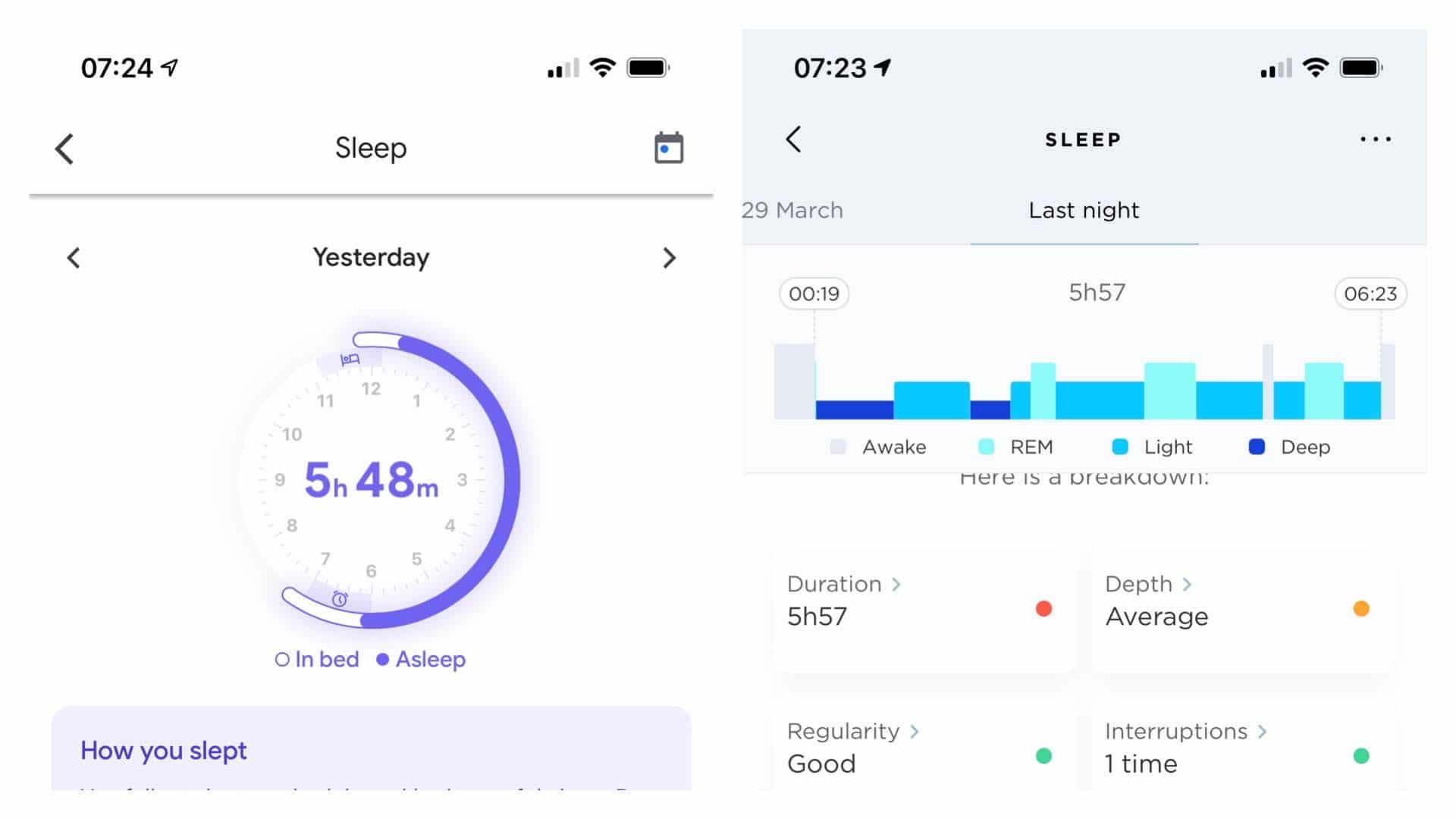
For the first couple of days, the 2021 Google Nest Hub seemed like an absolute failure as the hardware was configuring itself. It would miss the times we’d get up in the middle of the night and completely disagree with the Withings Sleep Analyser in simple issues, such as what time we had awoke or come to bed. The idea of the Nest Hub is that it only tracks one person, not two, but there’s a possibility that in the first day or two, it hadn’t quite calibrated itself to our body.
And then a few days in, it suddenly started working properly. It’s almost like it was “calibration complete”, and it miraculously started doing a better job. Much like how some phones need a couple of days to let the AI battery management understand your habits, so too does Google’s Soli sleep tracking, which struggles in the beginning, but eventually makes sense. There was even one night where the Google Nest Hub 2nd gen and the Withings Sleep Analyser lined up perfectly, something we found out because Google stores the information in the Google Fit app associated with the Google address your Nest Hub is using.
What did we learn from the Google Nest Hub 2nd gen sleep tracking?
You may glean the odd detail here and there for the sleep tracking, such as when the best time is to go to bed or if you’re having sleeping disturbances such as coughing or snoring, but it doesn’t quite feel as though Google has totally nailed the sleep tracking overall.
Respiratory rate is being tracked, sure, and that can be useful, but it may miss out on when you get up in the middle or near the end, and as such might not necessarily offer a lot of insights in the beginning. And all of this is processed on the device, though, so you can rest assured knowing Google’s big cloud of information isn’t looking through what you’re doing in bed.
However it’s good to keep in mind that Google’s sleep tracking is still in the early days, so while our week long with the Google Nest Hub review period was interesting watching the sleep tracking data, it was hardly information we’d call insightful. We reckon we’d need more time to understand what it’s doing, and to see if Google can provide more understanding into our sleeping patterns overall.
What does the 2021 Nest Hub need?
The inclusion of sleep tracking is nice, and the additional volume boost is also welcome, but there are things we’d love to see Google improve in the Nest Hub 2nd gen to, or even the Nest Hub 3rd gen, as at least one would have to be a hardware change.
One of them is to pay attention a little more, which is a problem we’ve seen from both this new Nest Hub and the older models. Simply put, it doesn’t always feel like it’s listening, and we’re not entirely sure why.
Rather like we’re talking to someone distracted, so sometimes it gets our words, but other times, it completely misses out.
Maybe it’s a problem with speed, because we’ve seen a few slowdowns on the Nest Hub 2nd gen, whether it takes a second or two for the screen for our sleep analysis to load up, or if the menu options feel delayed in what you press and then what loads.
The quad-core chip used in the 2021 Nest Hub may be fine, but there are definite speed issues here, and that’s not our only complaint.
Frankly, if this thing is going beside our bed, we’d love it if Google would include a USB port, which it has not. Rather, you get no way to charge your phone or earphones, even if Lenovo thought about that for its take on a bedside smart assistant, the Lenovo Smart Clock. The two devices are obviously different, but we’re surprised Google didn’t opt for one, as even a USB Type C port would have been welcome here.
Maybe that’ll be a Nest Hub 3rd gen thing.
Is the Google Nest Hub 2nd gen worth your money?
At $149, though, Google wins the argument for valid, delivering what is basically the version it was selling up until recently, but marginally better for the same price.
With an Australian price tag of just under $150, the Google Nest Hub 2nd gen hits the value argument well, with the screen and sleep tracking being a combination that you can’t find in any other smart screen or speaker yet. We still think the sleep tracking needs some time to improve, but for the price, it’s a very intriguing take on the bedside clock, even if it needs a USB port.
Yay or nay?
If you’re in the market for smart speaker that can show you news, recipes, or even be used as a photo display, the Nest Hub 2nd gen makes an easy case, and it’s still a great little option a few years on.
The added volume is nice and the sound is decent, so we still think this is a solid choice for a smart screen, especially if you’re new to the whole smart speaker and smart screen world.
However the sleep tracking is an interesting bonus, and if you’re interested to see what your sleep is doing but you don’t want to wear a gadget, Google’s Nest Hub is a choice that could grow with you.
Frankly, it’s a great addition to the home, whether it’s going beside the bed or in another room. Recommended.
